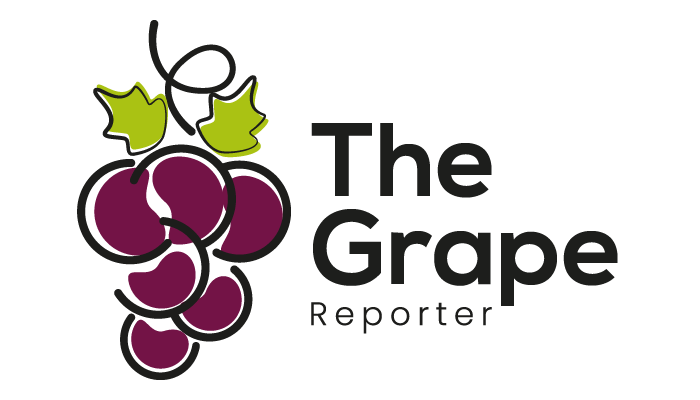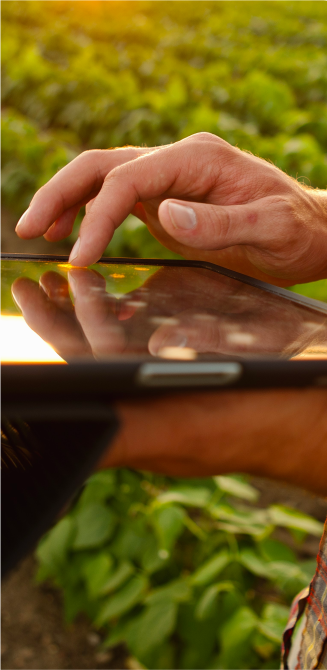The content of this article 'Cultivating grapes under covers' was prepared by Agriplastics Community and has been revised and republished by FreshFruitPortal.com.
On this occasion, we want to talk about the practice of cultivating grapes under covers, an alternative that may be somewhat new for some farmers, but that has become a favorite of hundreds of agricultural producers around the world for several decades, thanks to its advantages and benefits.
If you grow grapes and have doubts about the ideal type of plastic cover to use, do not hesitate to contact these experts.
Evolution in the use of covers:
Agricultural work, and especially fruit cultivation, done using protective structures is not a new practice. It has been evolving since the 17th century when the first greenhouses began to be built with the objective to plant pineapple, citrus fruits, and grapes in central Europe.
However, when this method of fruit cultivation under a protection system was attempted, some limitations arose basically due to the following reasons:
- The structures that held the cover material could be too complex.
- The large size of some trees and plants proved to be a limitation.
- More effort was required to dismantle the covers after the arrival of the winter season, so the cold could have a more direct impact on the crops.
- It represented a higher cost compared to the conventional open field practice.
The practice gradually transformed and almost by the end of the 20th century many farmers had already begun to use plastic materials to optimize agricultural work, especially when it came to cultivating grapes under covers.
Main benefits of cultivating grapes under covers:
One of the most attractive benefits was the possibility of shortening the ripening times, which would allow producing grapes faster and with better quality, in order to meet the cultivating demand of consumers, aside from being a cheaper option and offering simpler workability than in previous years.
Several trials were carried out in the late 1950s in southern and central Italy for example, obtaining good results when cultivating grapes under covers, in this case regarding table grapes where the clusters looked more appetizing and with sweeter grape-berries.
Differences were also established depending on the type of grape obtained, the time of fruit coverage, environmental conditions and other agronomic aspects that affected the crops.
The progress continued and, thanks to the demand for products outside the seasonal windows of cultivation, plastics that were more suitable, not only to grow grapes under covers but also for the planting of other fruits and for diverse agricultural purposes, were created.
Today, using these plastics is much more common and less expensive, they have a high level of flexibility and transparency, aside from being more manageable, adaptable, weightless and with a great capacity to withstand typical environmental hardships such as avoiding dust accumulation, the incidence of rain, excess humidity and sun rays.
![]()
Flowering under plastic on the left side vs. flowering without plastic on the right side.
Steps to grow grapes under covers:
For a crop of grapes under covers to prosper and give better results, it is necessary that the plastic covers are fixed to a good structure, and for that purpose, it is advisable to use those made of metal, concrete covered with zinc or, if preferred, those made of wood, but everything will depend on the preferences of the farmers and the shape they decide to give to the structure.
This frame or structure, in addition to being lasting and having a low cost, must also be highly resistant, light in weight and with a low “volume” to prevent the shadows from interfering within the crop.
There are those who prefer to implement structures with a trellis system so that grape plants, which tend to get tangled up, are more comfortable in their development. One of the recommendations that should be considered is that once the vineyards are being covered with plastic, the grape leaves should be protected to prevent them from burning.
In order to guarantee that the grape leaves don’t burn, the plastic must be placed in a way that allows ensuring a reasonable distance, approximately 12 or 32 inches, not only between each layer of plastic but also between the top of the foliage of the grape and the cover itself, as this helps the air circulate freely, helping the crop remain ventilated without undesirable burns that can compromise the integrity of the plants.
How to choose plastics for the covers?
Currently, there is a wide variety of options on the market, however, when choosing plastics to grow grapes under covers it is crucial that they possess good spectroradiometric properties
A plastic film with the appropriate properties can guarantee optimal results in terms of fruit ripening times and harvest, yield, the quality of grape-berries, and also help meet the physiological requirements of the crop to avoid excessive solar radiation or high temperatures that could compromise the entire crop.
Farmers should guarantee that the solar radiation that is allowed to pass through the plastic films to the crop is within a range of 80 to 90% in order to reach the leaves, sprouts and fruits, thus allowing for an adequate process of photosynthesis, which promotes the differentiation of the flowers and the ripening of the grapes.
Ideally, the proper thermal effect should occur when grapes are cultivated under covers if your objective is a grape plant that matures in less time. However, there are plastics that due to their chemical composition can decrease the range of transmission of solar radiation to plants, and this can sometimes delay the process and produce grape crops with much longer stems, resulting in the need to pay close attention to the goal you expect to achieve when it comes to the vineyard.
Among the types of plastic films that are developed today are those with low-density polyethylene (PE) and ethylene acetate (EVA), where PE is characterized by having a relatively low thermal effect, although it has good resistance and a good level of transparency against the sun rays.
Some farmers who choose this type of plastic film rely on using mineral substances such as aluminum sulfate or silicate to balance the thermal effect; meanwhile, EVA, has a higher level of thermal effect thanks to the vinyl acetate resins.
By being able to modify the microclimatic conditions within the covers it is possible to guarantee much larger grapes, with a sweeter taste, better texture, smoothness and even seedless.
If you opt for earliness in your production cycle you can advance the maturation of the grape-berries between 10 to 40 days it will all depend on the type of coverage used, but also the type of structure as that of a more closed plastic house where the top and sides of the vineyard are covered. This causes most of the solar radiation that enters this closed environment, along with the infrared radiation from the ground, to be trapped inside the covers, gradually raising the air temperature and levels of humidity due to the water evaporated from the soil.
Opting for late coverage to achieve delays, or extension, of the maturation and harvesting process. This option is usually applied for late-ripening species where the qualities of a larger, stronger skin grape are the objective, which helps maintain the hydration state of the grape-berry longer so that it remains a fresh product for a longer period.
Also, with late coverage, the fruit cluster is sheltered so that it is not affected by weather adversities. The structures used in this case are more open and the plastic films only protect and shade the top of the foliage, while the sides are exposed to provide more ventilation to the vineyard and avoid heat build-up.
Supervision, care, and cleaning of the vineyards will always be necessary, especially at times of higher humidity since there is a greater risk of the development of fungal diseases.
If you need advice on the type of plastic film that best suits the cultivation of grapes in your geographical area based on its particular conditions, contact us and we will help you without any obligation whatsoever.
Plastic films specifically recommended for this fruit's cultivation:
Sis a specific coverage material for table grapes. The material is sold in different thicknesses (120/150/180 microns normally) based on the radiation and expected duration, among others. Its main features are two side reinforcements and a central one that allow its perfect adaptation to the typical structures for this crop.
The optical properties are also essential and as we have mentioned before, depending on the correct choice of material and the variety of the grape, we can get advances in harvesting, delays, intensity in color, increase of berry caliber, and uniformity of berry weight, among others.
Even today, there are farmers who have decided not to take the step of cultivating grapes under covers, as they believe that doing it in an open field conventional way is much better, more natural and does not require as much capital investment. However, the truth is that globally more and more agricultural producers and farms are inclined towards the use of plastic films, since they give their crops the protection necessary to thrive in the time frame required, either earlier or later, without being affected by atmospheric phenomena and, especially today, by some specific effects of climate change that may take place in each region.
While one of the main benefits of cultivating grapes under covers is that it allows protecting the vineyards from external agents such as rain, very cold or very hot temperatures, as well as to help obtain grapes of greater size and better flavor, the truth is that there are many more benefits that can be obtained from this method, for example:
- Saving plenty of irrigation water and taking better advantage of the water trapped under the structure after the evaporation process.
- The grapes have a better appearance and a more uniform size.
- More options to successfully export them to other regions without being damaged in transport thanks to their liquid content and durability.
- Increase grape production by approximately 20%, being able to commercialize them in seasons where they usually could not be enjoyed.
- A sample of the success of the commercialization of grapes can be seen in the state of California, in the United States, where according to information from the California Department of Food and Agriculture by the end of 2018 the export of grapes reached $6.25 billion.
A sample of the success of the commercialization of grapes can be seen in the state of California, in the United States, where according to information from the California Department of Food and Agriculture, by the end of 2018 the export of grapes reached $6.25 billion.
What about the return on investment?
“Regarding the average sale price of table grapes, the real price, of 2.43 dollars per kilo to the farmer, if we multiply that by the largest amount of kilos exportable, and having covered those nine hectares, it’s more or less 100,000 dollars in return on investment, let’s say about 10,000 dollars per hectare. Considering that a structure to cover the grapes, can cost around $ 30,000, we would need in this case, in a year without exceptional weather incidents, 3 years to recover the initial investment. Since these permanent structures will last for many more years, not less than 15 years, the increase in overall operational profits is guaranteed."
Juan García, Product Manager of the Greenhouse Cover Division of Armando Alvarez Group, points out that this scenario can be easily achieved in a season where there are no major weather events that could compromise the proper development of plastic covers and its impact on table grape crops. For example, if everything happens under the normal crop conditions and the crop manages to prosper without obstacles, after investing in plastic covers, agricultural producers could recover the initial investment in an estimated three years. On the contrary, in a season with unstable climate conditions, a crop that is uncovered can suffer great losses in yield and fruit quality and therefore the advantages of a protective cover are even greater, as immediate, and can mean saving the business itself.
This is a great advantage from an economic point of view and for the crops as well, since, although at the beginning it will require a significant expense, in the long term this will be transformed into a complete investment that’ll help grape crops prosper under structures that, in the best scenario, can last between 18 and 22 years or even more, depending on the climate and the treatment given to them.
Nowadays, more agricultural producers around the world are turning to the use of plastic covers for fruit trees to enhance and protect their crops, especially due to the effects of climate change.
Source: Agriplastics Community































